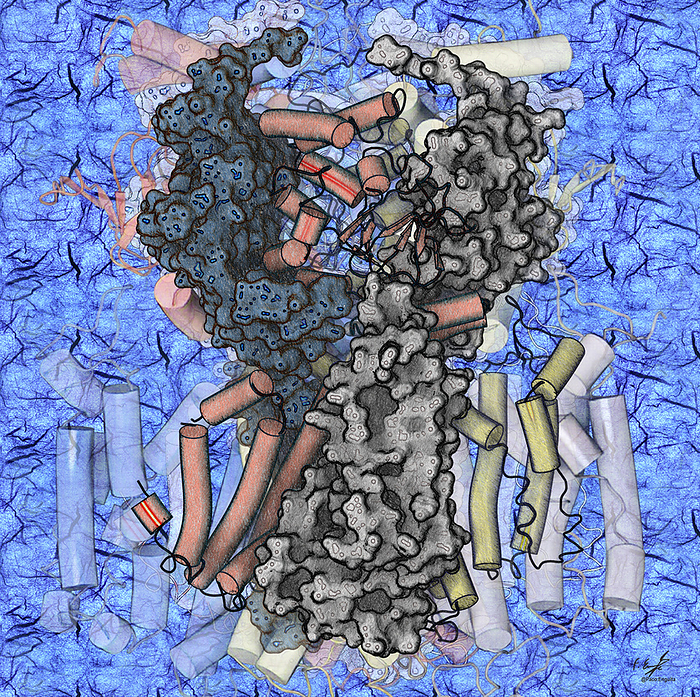
RM
Retinal cyclic nucleotide-gated channel, illustration
Illustration of a cyclic nucleotide-gated (CNG) channel found in the retinal rod cells of a cow, in its closed conformation. The retina is the light sensitive membrane at the back of the eye. In the absence of light, cyclic guanosine monophosphate (cGMP) binds to this transmembrane channel, causing it to open. Light activates the enzyme phosphodiesterase, which breaks down cGMP, resulting in the channel closing. This generates an electrical signal that is sent to the brain., by FRANCISCO J. ENGUITA/SCIENCE PHOTO LIBRARY

More
Top Categories
